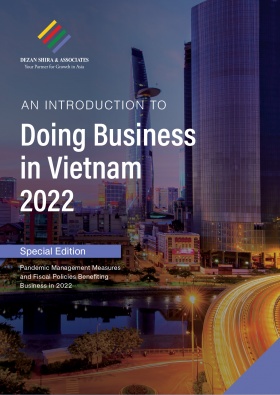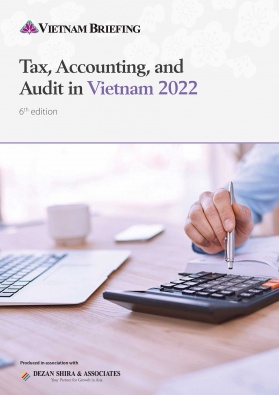Explained: Implications of the Latest Fed Rate Hike on the Vietnamese Dong
The US Federal Reserve raised interest rates by 75 basis points in its latest rate hike. This will inevitably lead to a stronger US dollar, which will impact currencies around the world and the Vietnamese dong is no exception. Here’s what this latest rate hike might mean for the local currency.
The US Federal Reserve has jacked up interest rates by 75 basis points, a move that will strengthen the US dollar. This is on the back of a series of rate hikes since the beginning of the year aimed at limiting near 40-year high inflation in the United States.
A stronger US dollar has far-reaching implications for emerging economies like Vietnam.
While it can be a boon for exporters fulfilling contracts denominated in US dollars, imports become more expensive as does fulfilling debt obligations.
As a result, Vietnam, specifically the State Bank of Vietnam (SBV), has worked hard to keep the value of the Vietnamese dong (VND) stable using a number of levers and pulleys unique to the Southeast Asian nation.
How does the SBV manage the exchange rate?
The SBV has a number of tools at its disposal that it uses to stabilise the exchange rate and keep inflation in check.
A managed float
The VND is on a managed float, similar to a crawling peg, to the US dollar. The SBV sets the price of the local currency each day. The currency can then only be traded within a band either side of the SBV’s set rate.
Up until October 17 that was 3 percent either side of the daily rate set by the SBV. On October 17, however, this was widened to 5 percent giving the VND more room to move.
Earlier this week, Reuters reported that Vietnam was preparing for the possibility of widening its trading band a second time.
Vietnam’s foreign currency reserves
The SBV has also been using Vietnam’s foreign currency reserves to shore up the VND.
Vietnam has dipped into its reserves to the tune of around US$20 billion this year by some estimates (Vietnam does not regularly publish details of its foreign reserves).
At the end of 2021, according to the World Bank, Vietnam had total reserves of just over US$109 billion. That’s just over 18 percent of its reserves that have been spent buying up VND – a sizable chunk of its rainy-day fund.
Credit room limits
The SBV also limits how much Vietnamese banks can lend.These limits are set out at the beginning of the year based on the target inflation rate as well as the credit ranking of the bank (banks with healthier balance sheets get higher limits), according to SBV Governor, Nguyen Thi Hong.
That said, these limits are often readjusted. Throughout the course of 2022 this has occurred multiple times in response to higher demand for credit. With many banks already maxing out their credit limits, that demand is still strong.
Interest rates in Vietnam
Not only does the SBV set the base interest rate, it also sets maximum interest rates for both deposits and loans. It can also set different interest rates for different products.
The SBV started raising interest rates on September 9 this year after leaving rates unchanged for almost two years. This was followed by a second increase on October 25.
| Interest rates set by the SBV | Oct 1, 2020 | Sept 9, 2022 | Oct 25, 2022 |
| Demand deposits and deposits with terms of less than a month | .2 | .5 | 1 |
| Deposits with terms ranging from 1-6 months | 4 | 5 | 6 |
| Deposits in VND at People’s Credit Funds of Vietnam and microfinance institutions | 4.5 | 5.5 | 6.5 |
| Refinancing rate | 4 | 5 | 6 |
| Discount lending rate | 2.5 | 3.5 | 4.5 |
| Overnight loans through interbank electronic payments and loans from the SBV to cover capital shortfalls when clearing payments to credit institutions | 5 | 6 | 7 |
| Credit institutions and foreign bank branches (except for People’s Credit Funds and microfinance institutions) short-term loan interest rate | 4.5 | – | 5.5 |
| People’s Credit Funds and microfinance institutions short-term loan interest rate | 5.5 | – | 6.5 |
What are the implications of SBV interventions in the exchange rate?
Managing the exchange rate is a balancing act that presents both benefits and challenges.
The dong has been relatively stable
Since the beginning of the year, the VND has lost only about nine percent of its value to the US dollar. This is in contrast to much bigger devaluations among its regional peers.
Currency Values in Southeast Asia Against the US Dollar
| Foreign currency valuation against US$1 | ||||
| Jan 1, 2022 | November 3, 2022 | Change | ||
|
Thai Baht |
THB |
33 | 38 | 15% |
|
Indonesia Rupiah |
IDR |
14242 | 15790 | 11% |
|
Malaysian Ringgit |
MYR |
4.1765 | 4.743 | 14% |
|
Vietnamese Dong |
VND |
22855 | 24865 | 9% |
|
Philippines Peso |
PHP |
51 | 59 | 16% |
Overseas remittances are worth less
Though the Vietnamese dong has remained relatively stable, freer currencies in neighbouring developed economies have had much more substantial declines against the dollar.
VN Express reported earlier this week that this is reducing the value of remittances sent from workers overseas.
Japan, Taiwan, and South Korea, which account for 90 percent of Vietnamese workers overseas, have all seen their currencies fall against the Vietnamese dong.
VND Appreciation Against Select Currencies
| VND per unit of foreign currency | ||||
| Jan 1, 2022 | November 3, 2022 | Change | ||
|
Japanese Yen |
JPY | 199 | 168 | 18% |
|
New Taiwan Dollar |
TWD | 825 | 773 | 6% |
|
South Korean Won |
KRW | 19.22 | 17.51 | 10% |
Credit shortages are impacting businesses
As a result of credit control limits, some businesses are struggling to access capital.
This has been particularly hard felt in the fuel industry where not only has the price of oil increased due to the decline in value of the VND, but the price of fuel itself has also risen.
This has led to challenges ensuring a steady supply of fuel and shortages in some areas.
What’s next for the Vietnamese dong?
Though it’s been only days since the US Federal Reserve raised interest rates, the value of the VND is showing signs of a continued decline.
Further intervention may be needed if that decline is to be arrested, however, these measures have their limitations. Vietnam’s foreign reserves are finite and limiting credit can only work for so long before it begins to drag on the economy.
See Also
The Euro’s Depreciation: What Should Businesses in Vietnam Expect
About Us
Vietnam Briefing is published by Asia Briefing, a subsidiary of Dezan Shira & Associates. We produce material for foreign investors throughout Eurasia, including ASEAN, China, India, Indonesia, Russia & the Silk Road. For editorial matters please contact us here and for a complimentary subscription to our products, please click here.
Dezan Shira & Associates provide business intelligence, due diligence, legal, tax and advisory services throughout the Vietnam and the Asian region. We maintain offices in Hanoi and Ho Chi Minh City, as well as throughout China, South-East Asia, India, and Russia. For assistance with investments into Vietnam please contact us at vietnam@dezshira.com or visit us at www.dezshira.com
- Previous Article Why SEA Craft Beer Brewers are Choosing Vietnam
- Next Article The Future of Vietnam’s Sharing Economy, with Dezan Shira & Associates’ Director, Filippo Bortoletti
































